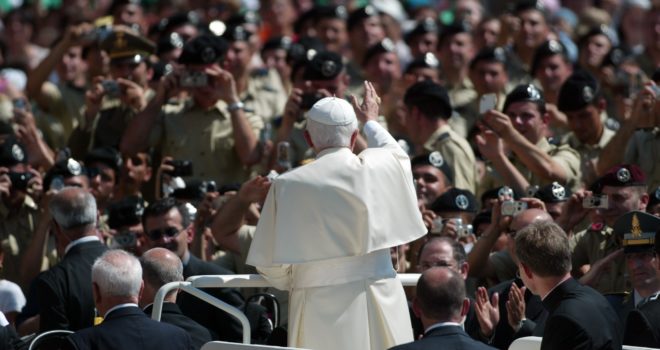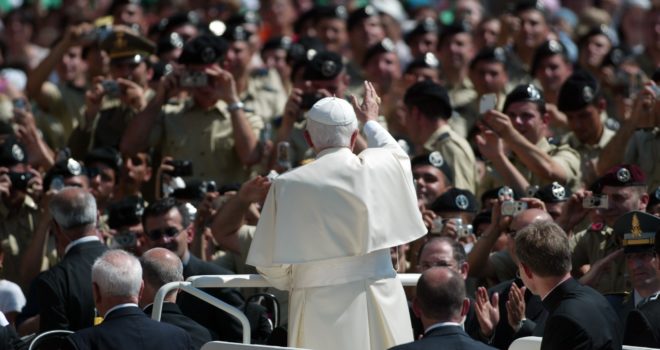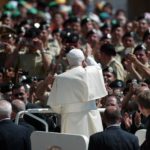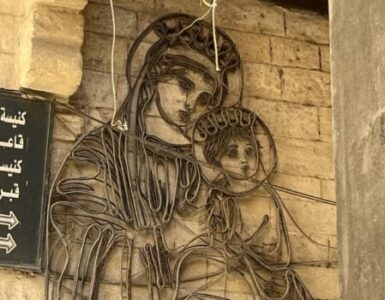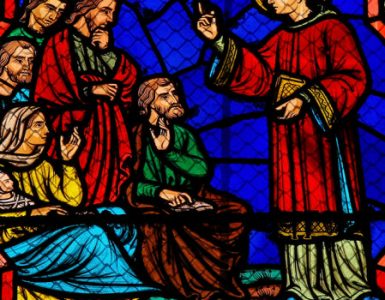On January 27, 1988, Joseph Cardinal Ratzinger, the then Prefect of the Vatican’s Congregation for the Doctrine of the Faith, delivered an address at a Lutheran church in New York City. A standing-room crowd of more than 1,000 attended. They had come to hear the Cardinal lecture on biblical exegesis. A number of dignitaries were present including Cardinal O’Connor, Bishop Stafford of Denver, and the prizewinning philosopher of science, Father Stanley Jaki. Academics came from such renown schools such as NYU, Princeton, Swarthmore and Harvard.
The Cardinal began his presentation in a thin voice on modern biblical criticism. Although his voice was soft and his German accent was strong, he spoke to a rapt audience. His talk was rudely interrupted, however, when a half-dozen men stood up, raised their fists and screamed, “Nazi! . . . Fascist! . . . Shame! . . . Silence means Death!” The crowd was stunned. Another group rose to its feet and shouted at the eminent speaker, “He’s no man of God. He’s the devil.” A young homosexual pointed at Cardinal Ratzinger and said, “He’s killing us! He’s killing us!”
Several policemen appeared. As the chanting diminished, Ratzinger spoke: “I think we’ve had sufficient occasion to listen to this message. There are other people here who wish to hear what I have to say.” The disturbance lasted about 15 minutes. Journalist John Wauck, who was present, reported that “The burning eyes, the contorted faces, the loud hard shouts, the bizarre and blasphemous lies—all directed at a pious ecclesiastic who refused to become angry.”
Ratzinger was the calm the the storm. What had he said that so infuriated the homosexuals? He had simply pointed out that homosexual acts are not compatible with Catholic Church teaching. He was not their enemy. He wrote that “It is deplorable that homosexual persons have been and are the object of violent malice in speech or in action. Such treatment deserves condemnation from the church’s pastors whenever it occurs.”
Cardinal Ratzinger knew about real Nazism from an early age and he and his family repeatedly fled from it. The disturbance it the Lutheran church was not entirely new to him, a man who is centered in God. Observers recognized that Pope Saint Paul II was a man of imperturbability. The same can be said of Cardinal Ratzinger/Pope Benedict XVI. Both could witness things falling apart without losing their calm and maintain a clear understanding of the proper response.
The incident in 1988 is a microcosm of what has been happening in the Church since then. Ratzinger observed that the Church “has become in an entirely unprecedented way the Church of pagans: she is no longer, as she once was, the Church of pagans become Christians, but the Church of pagans who still call themselves Christians and in reality have become pagans.”
The secular world continues to believe that it has found a better way in “liberalism.” But its concept of liberalism is wrapped around the autonomous self who wants to do whatever pleases him and will not abide correction. Such distorted liberalism is unable to rise about the autonomous self and work for the good of society. In the meantime, Pope Emeritus Benedict XVI has an important message for all those Catholics who are distraught by the present turmoil—be calm, trust in God, pray, and be faithful.
Image by Marco Iacobucci Epp on Shutterstock


